-
 Bitcoin
Bitcoin $108,778.4882
0.68% -
 Ethereum
Ethereum $2,563.3783
2.01% -
 Tether USDt
Tether USDt $1.0001
-0.01% -
 XRP
XRP $2.2881
0.77% -
 BNB
BNB $662.2819
1.12% -
 Solana
Solana $152.2652
3.21% -
 USDC
USDC $0.9999
-0.01% -
 TRON
TRON $0.2873
0.90% -
 Dogecoin
Dogecoin $0.1715
4.20% -
 Cardano
Cardano $0.5868
1.50% -
 Hyperliquid
Hyperliquid $39.6796
1.73% -
 Sui
Sui $2.9136
0.85% -
 Bitcoin Cash
Bitcoin Cash $495.4980
1.77% -
 Chainlink
Chainlink $13.5765
3.06% -
 UNUS SED LEO
UNUS SED LEO $9.0753
0.53% -
 Stellar
Stellar $0.2503
3.73% -
 Avalanche
Avalanche $18.2012
1.86% -
 Shiba Inu
Shiba Inu $0.0...01174
1.83% -
 Toncoin
Toncoin $2.7998
-6.08% -
 Hedera
Hedera $0.1596
3.89% -
 Litecoin
Litecoin $87.3119
0.20% -
 Monero
Monero $319.5596
1.08% -
 Polkadot
Polkadot $3.3887
0.93% -
 Dai
Dai $0.9999
-0.01% -
 Ethena USDe
Ethena USDe $1.0001
-0.01% -
 Bitget Token
Bitget Token $4.3294
-1.36% -
 Uniswap
Uniswap $7.3898
1.60% -
 Aave
Aave $287.5336
5.76% -
 Pepe
Pepe $0.0...01005
3.24% -
 Pi
Pi $0.4588
1.90%
How to control the graphics card temperature for graphics card mining?
Optimal GPU temperature for mining is 60°C-80°C; maintain it with good airflow, regular cleaning, and monitoring to prevent overheating and ensure efficiency.
Mar 30, 2025 at 02:56 am
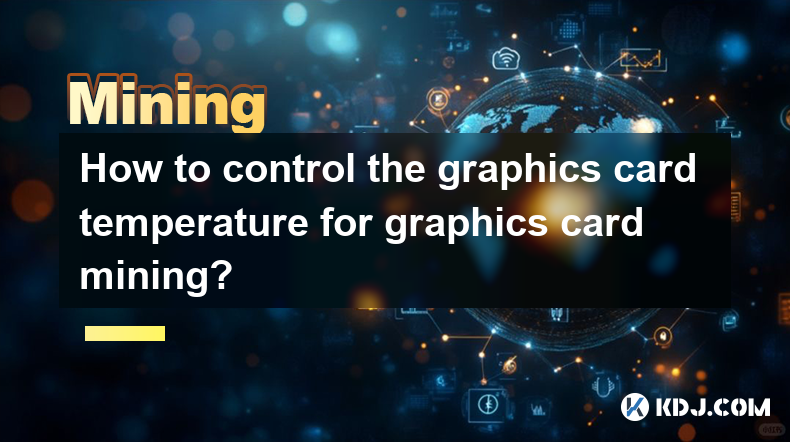
Understanding GPU Temperature and its Impact on Mining
Maintaining optimal graphics card (GPU) temperature is crucial for successful and profitable cryptocurrency mining. High temperatures lead to reduced hashing power, increased risk of hardware failure, and ultimately, lower mining earnings. Conversely, excessively low temperatures are unnecessary and can impact efficiency. The sweet spot lies in keeping your GPUs within their manufacturer's recommended operating temperature range. This usually sits between 60°C and 80°C (140°F and 176°F), but always check your specific card's specifications.
Factors Affecting GPU Temperature During Mining
Several factors influence GPU temperature during the demanding process of cryptocurrency mining. The most significant is the GPU load. Mining pushes GPUs to their limits, generating significant heat. Ambient room temperature plays a crucial role; a hot room will inevitably lead to hotter GPUs. Airflow within your mining rig is paramount; inadequate cooling can quickly lead to overheating. Finally, the quality and condition of your cooling solution (fans, heatsinks, thermal paste) directly impact temperature control.
Effective Strategies for GPU Temperature Control
Several methods can be employed to effectively manage GPU temperatures during mining operations. These strategies are crucial for maintaining the longevity and performance of your mining hardware. Let's explore these in detail.
Improve Airflow: Ensure your mining rig has excellent airflow. This can involve using multiple case fans, strategically placing them for optimal intake and exhaust, and ensuring there's sufficient space around the GPUs for air circulation. Consider using high-static pressure fans designed for cooling radiators or heatsinks.
Clean Your Rig: Dust accumulation significantly impedes airflow and increases GPU temperatures. Regularly clean your rig using compressed air, paying close attention to fans, heatsinks, and other components. A clean rig is a cool rig.
Monitor GPU Temperatures: Use monitoring software like MSI Afterburner, HWMonitor, or similar tools to constantly track GPU temperatures. This allows for proactive adjustments and prevents overheating before it becomes a problem. Set up alerts to notify you of excessively high temperatures.
Adjust Fan Curves: Most GPU software allows for custom fan curves. Instead of relying on automatic fan control, create a custom curve that ramps up fan speeds at lower temperatures, preventing excessive heat buildup. This can be quieter and more efficient than letting the fans run at full speed all the time.
Underclocking/Overclocking: Carefully consider underclocking or overclocking your GPUs. Underclocking reduces power consumption and heat generation, while overclocking can increase hashrate but at the cost of higher temperatures. Find the optimal balance for your specific hardware and cooling setup. Proceed with caution and monitor temperatures closely.
Use a Dedicated Mining Rig: Building a dedicated mining rig allows for better control over airflow and cooling. Dedicated rigs often have more space for components and better airflow management than repurposing a gaming PC.
Upgrade Cooling Solutions: If your current cooling solutions are inadequate, consider upgrading to higher-performance components. This could involve replacing stock coolers with aftermarket coolers, adding more fans, or even implementing liquid cooling systems for extreme cooling. This is a more significant investment but can significantly reduce temperatures.
Thermal Paste Application: Ensure proper thermal paste application between the GPU and its heatsink. Old or improperly applied thermal paste significantly reduces heat transfer efficiency. Reapplying fresh, high-quality thermal paste can make a noticeable difference.
Advanced Cooling Techniques for Extreme Overclocking
For miners pushing their GPUs to the absolute limit through extreme overclocking, more advanced cooling techniques might be necessary.
Water Cooling: Water cooling systems offer superior cooling performance compared to air cooling, enabling higher overclocks and lower temperatures. However, water cooling systems are more complex and expensive to implement.
Custom Loop Water Cooling: For ultimate control, a custom loop water cooling system allows for precise temperature management and customization. This is a highly advanced and technically demanding approach.
Frequently Asked Questions
Q: What is the ideal GPU temperature for mining?
A: The ideal GPU temperature range for mining is generally between 60°C and 80°C (140°F and 176°F). However, always refer to your specific GPU manufacturer's specifications for the recommended operating temperature range. Exceeding these temperatures can significantly reduce lifespan and performance.
Q: My GPU is overheating. What should I do immediately?
A: If your GPU is overheating (above 85°C), immediately shut down your mining rig to prevent permanent damage. Check your airflow, clean your rig, and ensure your cooling solutions are functioning correctly. If the problem persists, consider adjusting fan curves or upgrading your cooling system.
Q: Can I use a laptop GPU for mining?
A: While technically possible, using a laptop GPU for mining is generally not recommended. Laptop GPUs often have limited cooling capacity and are more prone to overheating under the intense load of mining. Furthermore, the hashrate of most laptop GPUs is significantly lower than dedicated desktop GPUs.
Q: How often should I clean my mining rig?
A: You should clean your mining rig at least every 3-6 months, depending on the environment. Dust accumulation can significantly impact airflow and increase temperatures. More frequent cleaning may be necessary in dusty environments.
Q: What software can I use to monitor GPU temperatures?
A: Several software applications can monitor GPU temperatures, including MSI Afterburner, HWMonitor, GPU-Z, and others. These tools provide real-time temperature readings, fan speeds, and other crucial metrics. Choosing the right software depends on your preference and operating system.
Q: Is underclocking always better for temperature control?
A: Underclocking generally reduces heat generation, but it also reduces hashing power. Finding the optimal balance between temperature and hashrate is crucial. Experimentation and monitoring are key to finding the sweet spot for your specific setup.
Disclaimer:info@kdj.com
The information provided is not trading advice. kdj.com does not assume any responsibility for any investments made based on the information provided in this article. Cryptocurrencies are highly volatile and it is highly recommended that you invest with caution after thorough research!
If you believe that the content used on this website infringes your copyright, please contact us immediately (info@kdj.com) and we will delete it promptly.
- Bitcoin Wallet Hack? Coinbase Exec Sounds the Alarm on $8B Whale Movement
- 2025-07-07 18:30:12
- Mercado Bitcoin, Tokenization, and XRP Ledger: A Latin American Power Play
- 2025-07-07 18:30:12
- Ripple's RLUSD: Revolutionizing Cross-Margin Trading for Institutions
- 2025-07-07 18:35:12
- Babylon, Bitcoin, and the EVM Mainnet: A New Era for BTCFi?
- 2025-07-07 16:30:11
- Queen Elizabeth Coin Sells for £31,000: A Royal Fortune in Your Pocket?
- 2025-07-07 16:30:11
- XRP Price Check: Will Resistance Trigger a July Drop?
- 2025-07-07 17:10:12
Related knowledge
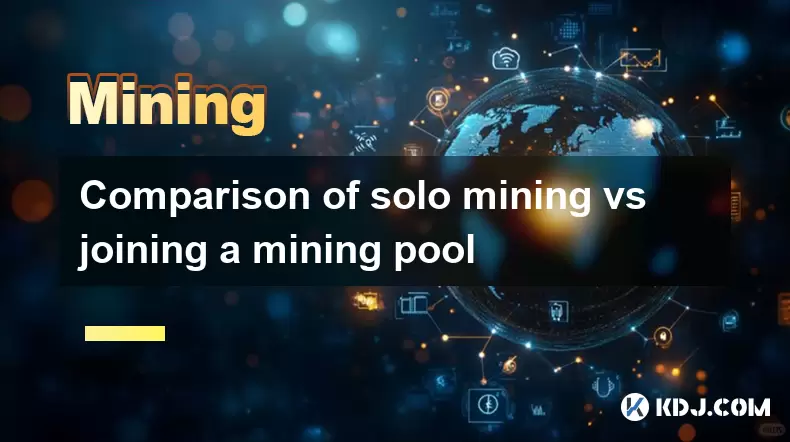
Comparison of solo mining vs joining a mining pool
Jul 05,2025 at 07:17pm
Understanding the Basics of Cryptocurrency MiningCryptocurrency mining involves validating transactions and adding them to a blockchain through computational power. Miners use specialized hardware, such as ASICs or GPUs, to solve complex cryptographic puzzles. Upon successfully solving these puzzles, miners are rewarded with newly minted coins. This pro...
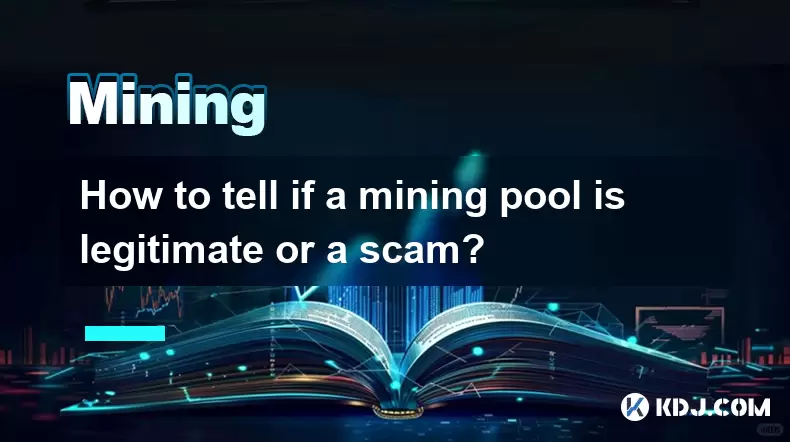
How to tell if a mining pool is legitimate or a scam?
Jul 03,2025 at 12:35pm
Understanding the Role of Mining PoolsMining pools play a crucial role in cryptocurrency mining by allowing individual miners to combine their computational resources and increase the likelihood of earning block rewards. A legitimate mining pool distributes rewards fairly, maintains transparency in operations, and has a strong community presence. Howeve...

What software do I need to join a mining pool?
Jul 05,2025 at 07:32pm
Understanding Mining Pools and Their RequirementsJoining a mining pool is an essential step for many cryptocurrency miners who want to increase their chances of earning block rewards. Unlike solo mining, where you attempt to mine blocks alone, a mining pool allows multiple miners to combine their computational resources to solve blocks more consistently...
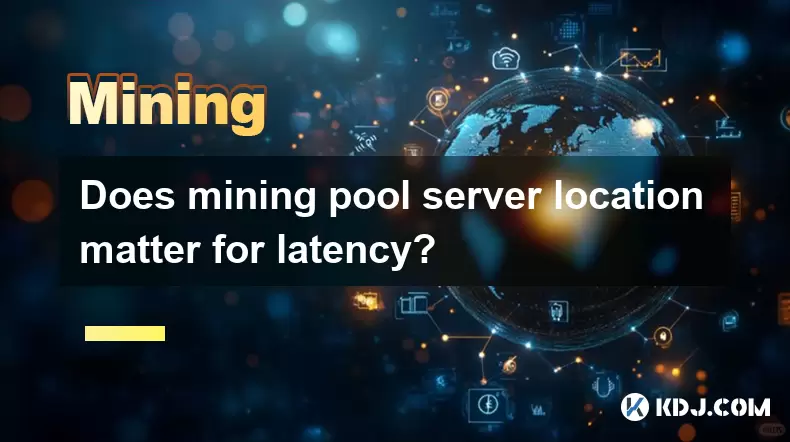
Does mining pool server location matter for latency?
Jul 06,2025 at 04:49pm
Understanding the Relationship Between Mining Pool Server Location and LatencyMining pool server location plays a crucial role in determining the latency experienced by miners during the mining process. In the context of cryptocurrency mining, latency refers to the time it takes for data packets to travel between the miner's machine and the mining pool ...

How to create your own private mining pool?
Jul 07,2025 at 02:51am
What Is a Private Mining Pool?A private mining pool is a restricted group of cryptocurrency miners who combine their computational resources to increase the probability of successfully mining a block. Unlike public pools, private mining pools are exclusive and usually require authorization or invitation to join. This exclusivity allows for better contro...
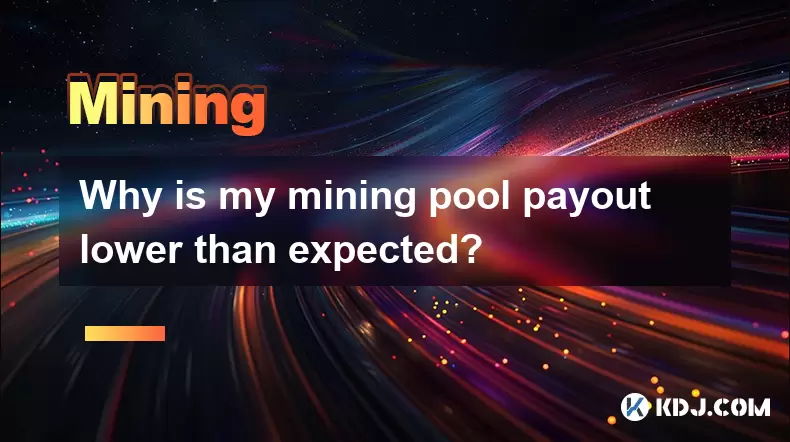
Why is my mining pool payout lower than expected?
Jul 03,2025 at 02:21am
Understanding Mining Pool Payout StructuresWhen you join a mining pool, it's important to understand the specific payout structure that the pool uses. Different pools operate under different reward systems, such as Pay Per Share (PPS), Proportional, Score-based, or Pay Per Last N Shares (PPLNS). Each method affects how and when miners receive their rewa...

Comparison of solo mining vs joining a mining pool
Jul 05,2025 at 07:17pm
Understanding the Basics of Cryptocurrency MiningCryptocurrency mining involves validating transactions and adding them to a blockchain through computational power. Miners use specialized hardware, such as ASICs or GPUs, to solve complex cryptographic puzzles. Upon successfully solving these puzzles, miners are rewarded with newly minted coins. This pro...

How to tell if a mining pool is legitimate or a scam?
Jul 03,2025 at 12:35pm
Understanding the Role of Mining PoolsMining pools play a crucial role in cryptocurrency mining by allowing individual miners to combine their computational resources and increase the likelihood of earning block rewards. A legitimate mining pool distributes rewards fairly, maintains transparency in operations, and has a strong community presence. Howeve...

What software do I need to join a mining pool?
Jul 05,2025 at 07:32pm
Understanding Mining Pools and Their RequirementsJoining a mining pool is an essential step for many cryptocurrency miners who want to increase their chances of earning block rewards. Unlike solo mining, where you attempt to mine blocks alone, a mining pool allows multiple miners to combine their computational resources to solve blocks more consistently...

Does mining pool server location matter for latency?
Jul 06,2025 at 04:49pm
Understanding the Relationship Between Mining Pool Server Location and LatencyMining pool server location plays a crucial role in determining the latency experienced by miners during the mining process. In the context of cryptocurrency mining, latency refers to the time it takes for data packets to travel between the miner's machine and the mining pool ...

How to create your own private mining pool?
Jul 07,2025 at 02:51am
What Is a Private Mining Pool?A private mining pool is a restricted group of cryptocurrency miners who combine their computational resources to increase the probability of successfully mining a block. Unlike public pools, private mining pools are exclusive and usually require authorization or invitation to join. This exclusivity allows for better contro...

Why is my mining pool payout lower than expected?
Jul 03,2025 at 02:21am
Understanding Mining Pool Payout StructuresWhen you join a mining pool, it's important to understand the specific payout structure that the pool uses. Different pools operate under different reward systems, such as Pay Per Share (PPS), Proportional, Score-based, or Pay Per Last N Shares (PPLNS). Each method affects how and when miners receive their rewa...
See all articles

























































































